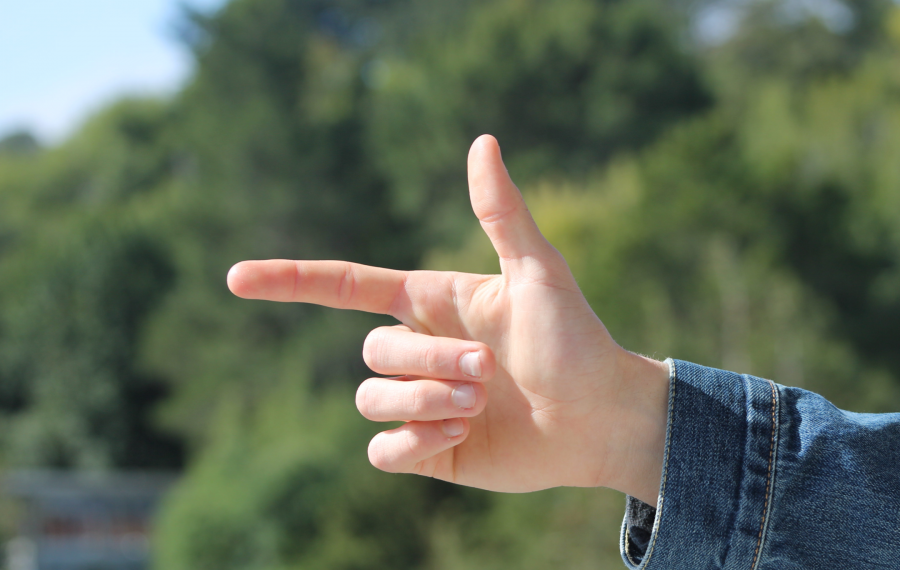On February 22, just eight days after the deadly Parkland shooting, President Trump tweeted that teachers should carry guns in the classroom to prevent further shootings. Teachers at Tam have commented on the issue, asking: would carrying guns actually make the school atmosphere safer?
Math teacher Chris Erlin voiced an opinion that was shared by several other teachers at Tam. “I don’t think it will fix the problem,” Erlin said. “From a personal perspective, if I were to be carrying a gun, even if I’m very careful, it’s more likely that children would be injured by my gun than I would save the day. And I don’t want to be a murderer. I don’t intend, in my life, to kill anybody, whether it’s somebody with another weapon or a student by mistake.”
Other teachers had similar points. “I think less guns is better. If there’s a gun in the classroom, it’s always possible that it could get in the wrong hands,” said a teacher who is not yet tenured and would thus prefer to remain anonymous.
Agreeing with the points made on gun control, social studies teacher Sarah Ewell said, “When the idea first was raised, the fact that I might possibly be skilled enough to use a gun and that I would be willing to shoot it at a student with other students around is a reality that I’m just not interested in contemplating. What if I shoot one of my kids? Or what if it’s one of my kids who’s shooting?”
Even the most trained police officers hit their targets approximately 28.3% of the time, according to New York City Police statistics. The chances of teachers being able to hit their targets are even lower.
On the other hand, science teacher Edward Harrison supports the idea of teachers being able to defend their students, but only in certain situations. “I think that it depends upon the school, it depends on a lot of factors: where the school is located, if it’s in an urban, suburban or rural area, if it’s open without any protection, and it depends on the security that the school already has in place,” he said.
“With our particular school, we’re very open, and we don’t have much security, so someone could intrude easily. I wouldn’t want to have a gun, but I would volunteer to have one if the security stays the way it is, if it doesn’t increase and get better. I would rather have a shot at staying alive, because I know that I would put myself between my students and the intruder if they had a gun. I would have to give up my life. So I’d like to have the ability to protect my students and also stay alive.”
“That’s the only reason I would do it. I’m not for teachers having guns, but as long as the security stays limited, someone has to protect the students,” Harrison said.
Currently, 10 states in the US already allow teachers and staff to carry guns, including Texas and now Florida, according to an analysis by the Education Commission of the States. Most of the states also have the highest rates of gun ownership per household. Although California has some of the strictest gun laws in the country, there is still a chance that carrying guns on school property will become federally mandated.
“If you start asking teachers to carry guns to school, I’m quitting [teaching], I’m leaving the country because I already think there are too many guns in the US,” Spanish teacher Tristan Bodle said. “To propose to deal with gun violence by putting more guns into circulation just seems absolutely nuts.”
Erlin is also unsure about continuing teaching if these proposed laws become reality. “If a law were passed allowing teachers to carry guns, and I knew that teachers on campus here were carrying guns, I would quit teaching,” he said.
Since the Parkland shooting, students have been speaking out about gun violence in an attempt to change the society we’re living in. But according to teachers at Tam, there are other actions that can be taken.
“One of the serious issues here is just that we’re living in a more anxious, more depressed, more isolated world than we ever have been before, and we’re seeing the effects of that on suicide rates, on opiod addictions, and so on. I think you can at least prove a correlation between those behaviors and the people who are doing these mass shootings,” said Ewell. “I think we need to really look at whether or not we are creating a society that’s actually enjoyable and productive to live in. We’ve started to do this breaking off and fragmentation of constantly being on our phones where we’ve stopped even bothering to care about whether or not the other people around us are actually okay.”
Erlin also believes that our community has a responsibility to help troubled students. “As a school we need to provide resources and nets to catch people who are at risk. We need to have better systems that identify students that might be so distraught, or upset, or isolated that they might turn into one of these shooters. Our job is to educate, not to arm.”


